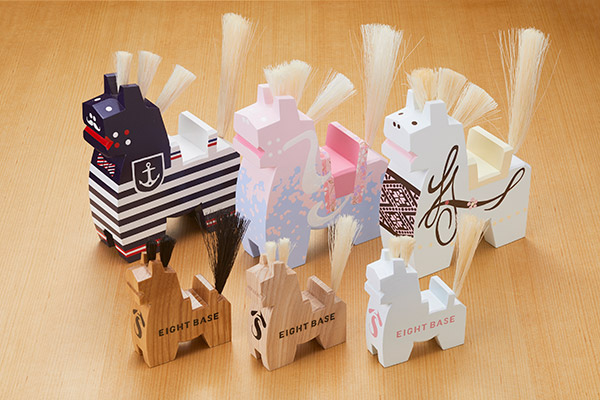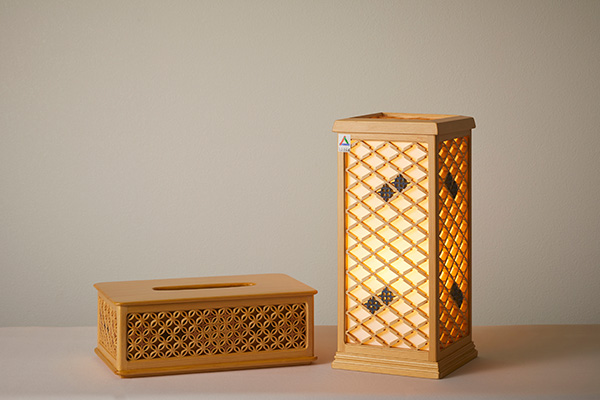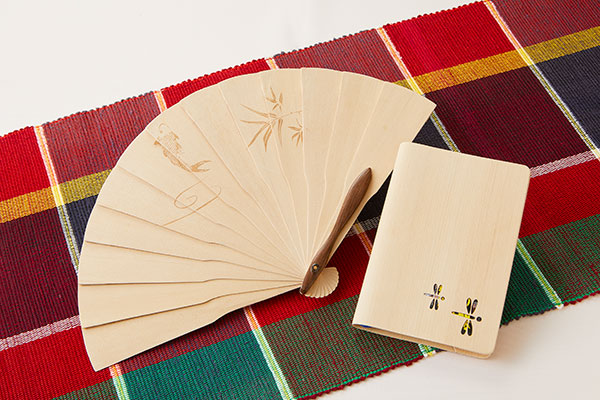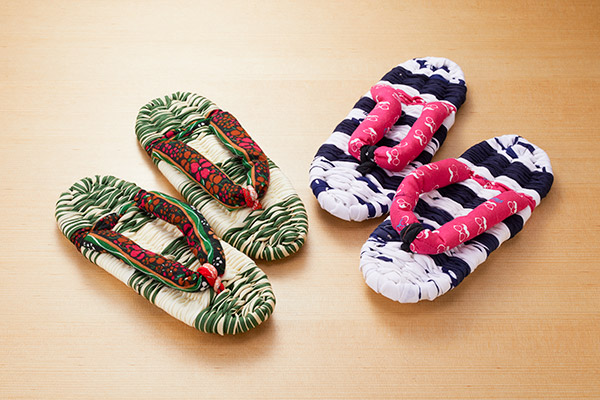

SOUVENIR
-
Nanbu Senbei
-
Gifts from
the Mountains -
Gifts from
the Sea -
Alcohol
-
Soft Drinks
-
Sweets &
Ice Cream -
Other Foods
-
Crafts
-
Sundries
Crafts
Yawata-uma Horses: This traditional toy is said to date back approximately 700 years. It is said that these wooden horses, which were originally made during the off-season for farmers as a side job, were sold as a souvenir during the annual festival at the Kushihiki Hachimangu Shrine, and became known as “Yawata-uma” horses. Their colorful appearance depicts the attire that the horses would done during rural weddings.
One of Japan’s three traditional horse folk toys, the horses represent good luck and are popular as celebratory or commemorative presents for weddings, new buildings, and so on.
Nanbu Sakiori Weave: Old cloth and worn-out kimono are torn into thin pieces, and used as the weft to make new fabric with four-color hemp yarn or cotton thread as the warp. Cotton, a valuable commodity in the Hachinohe region, was reused with more care and in more beautiful designs thanks to the wisdom of its people.
Nanbu Hanagata Kumiko (Wooden Fretwork): This style of wooden fretwork was passed down as a type of building ornamentation from the Asuka period (around the 7th century). A specialized plane called a hanagata kanna is used for the rounded processing to create beautiful, geometric designs in the woodwork without the use of nails. Wood sourced in the prefecture, such as Aomori hiba (Thujopsis), is used as the raw material, and differences in the type of wood and the color of the bark are used to create the designs that are the hallmark of this wood fretwork.
*The products shown are examples. Please note that some may not be available depending on the timing of your visit.

(YAWATAUMA Co., Ltd)


(Tate Tategu Craft)


(Sasaki Akio Haruko Farm)